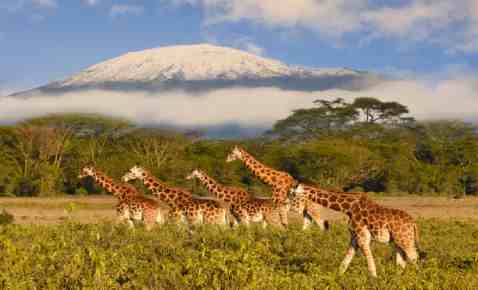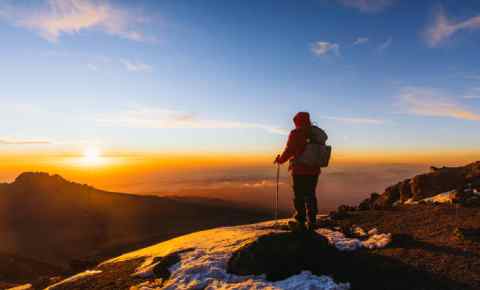Climbing Kilimanjaro is one of the most exciting adventures you can take, but it requires careful planning and a lot of preparation. You need to know what to expect and be prepared for challenges like altitude sickness and weather conditions.
To make sure you are prepared, practice your hiking skills on local trails and keep hydrated. Also, choose a trekking company with good reviews and a focus on safety and acclimatization.
What is Kilimanjaro?

Kilimanjaro is a large, volcanic mountain that is located in the northern part of Tanzania. It is Africa’s highest peak and one of the Seven Summits. Its summit is located at 5,895 meters above sea level.
It is also the largest free-standing mountain in the world. The mountain has five different climate zones ranging from cultivated land and rainforest to heath and moorland, alpine desert, and the arctic summit.
Climbing Kilimanjaro can be a challenging and rewarding experience. However, it is important to choose the right tour operator and climb with a guide who is experienced and alert to signs of altitude sickness. This is one of the main reasons people fail to make it to the top. It is also important to pace yourself and communicate with your guides about how you are feeling.
Climbing Kilimanjaro
Getting to the top of Kilimanjaro is not easy for even the most fit people. The biggest challenge is altitude sickness. It’s caused by lack of oxygen at high altitude, and it’s what defeats most climbers.
It’s recommended to book a medical checkup before you go. Responsible travel companies should also ensure that their guides are certified and well-trained. At Follow Alice, we use pulse oximeters to monitor our clients’ oxygen levels throughout their Kilimanjaro climb.
Taking it one day at a time is the best way to conquer Kilimanjaro. Many people get discouraged by the challenge, but you should always remember why you decided to make this journey in the first place! Hopefully this helps you push through when the going gets tough.
Routes to Climb Kilimanjaro
The best route to climb Kilimanjaro depends on a few factors. These include the desires behind the trek, if you want a scenic view or to experience wildlife. You also need to consider the climate of your destination. Depending on your choice of season, you may experience high traffic or dry weather.
Choosing the right route for you depends on your level of fitness, experience, and budget. The Lemosho and Machame routes are considered safer trails because they follow the golden rule of “walk high, sleep low.” This helps you avoid altitude sickness and improves your chance of summiting.
However, the Umbwe route is not recommended for beginners as it is extremely challenging and requires climbing skills to make it safely to the top. It is also the most expensive.
Equipment to Climb Kilimanjaro

The most common reason for people to turn back on Kilimanjaro is altitude sickness, which can affect even the fittest of climbers. This is due to the thin air that carries less oxygen at high elevations.
In more serious cases, a person can become confused or disoriented, have trouble breathing, and experience a build-up of fluid in their brain and lungs (high altitude cerebral edema or high altitude pulmonary edema). These conditions are life-threatening and require immediate descent to a lower elevation to get medical treatment.
This is why the guides on our Kilimanjaro climbs ask so many questions – to ensure that their clients are fully prepared for the rigours of the ascent and are at low risk of altitude sickness or accidents. On the mountain you will hear the mantra ‘Pole, Pole’ which means’slowly, slowly’ – it is important to take things easy and not rush!
Weather to Climb Kilimanjaro
The weather on Kilimanjaro is influenced by a number of factors including altitude and climatic zones. As such, the best time to climb the mountain is during either the short dry season in January and February or the long dry season from July through October.
Conclusion:
The worst time to climb is in April as the rainy season is in full swing. This can lead to wet conditions and poor visibility which can impede your climbing progress. Rain can also saturate the trails making them extremely muddy and slippery. This can make the trek more difficult and reduce your chances of reaching the summit. Besides being unnecessarily messy, wet conditions can affect your photographs and overall experience.
